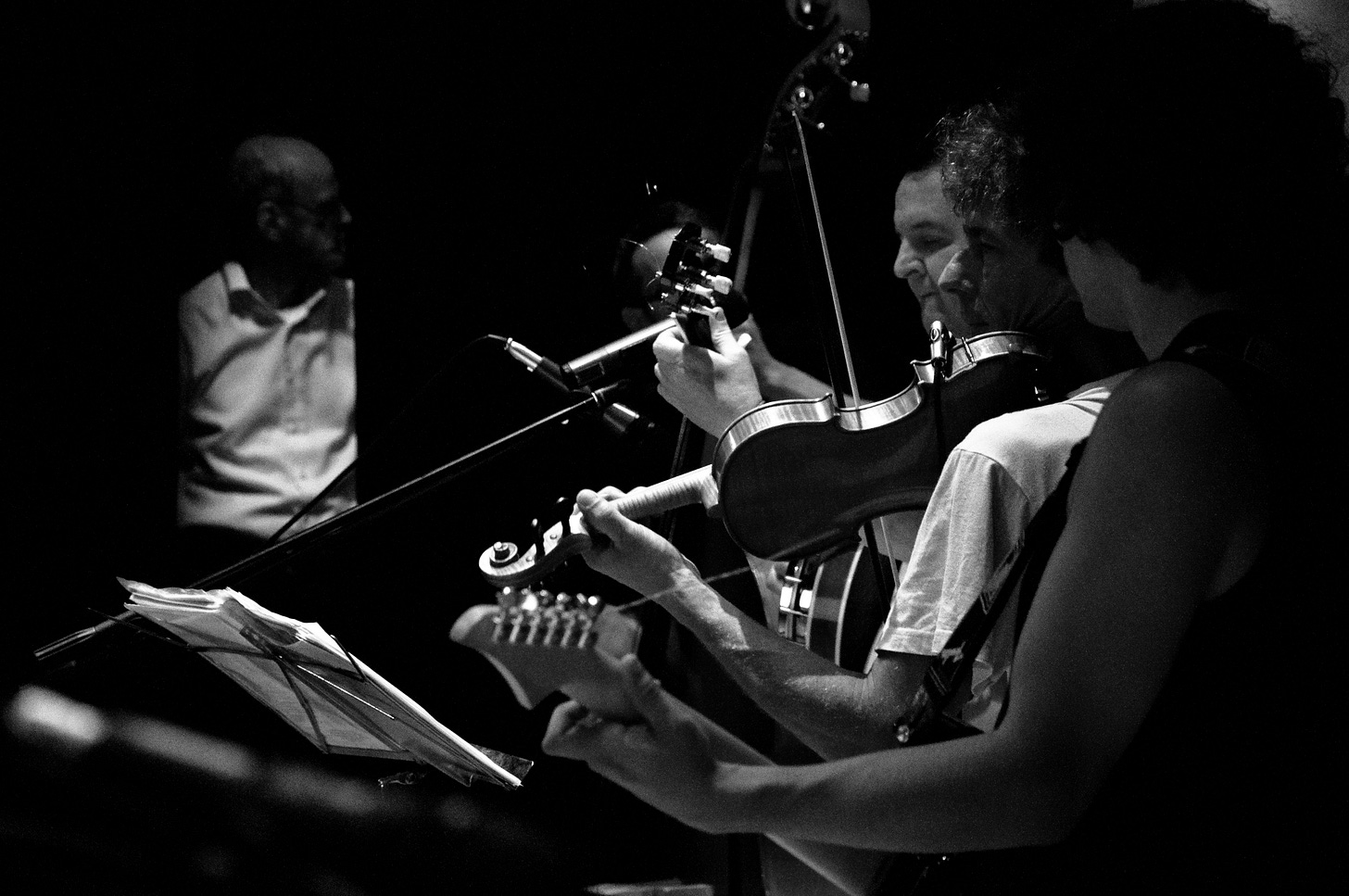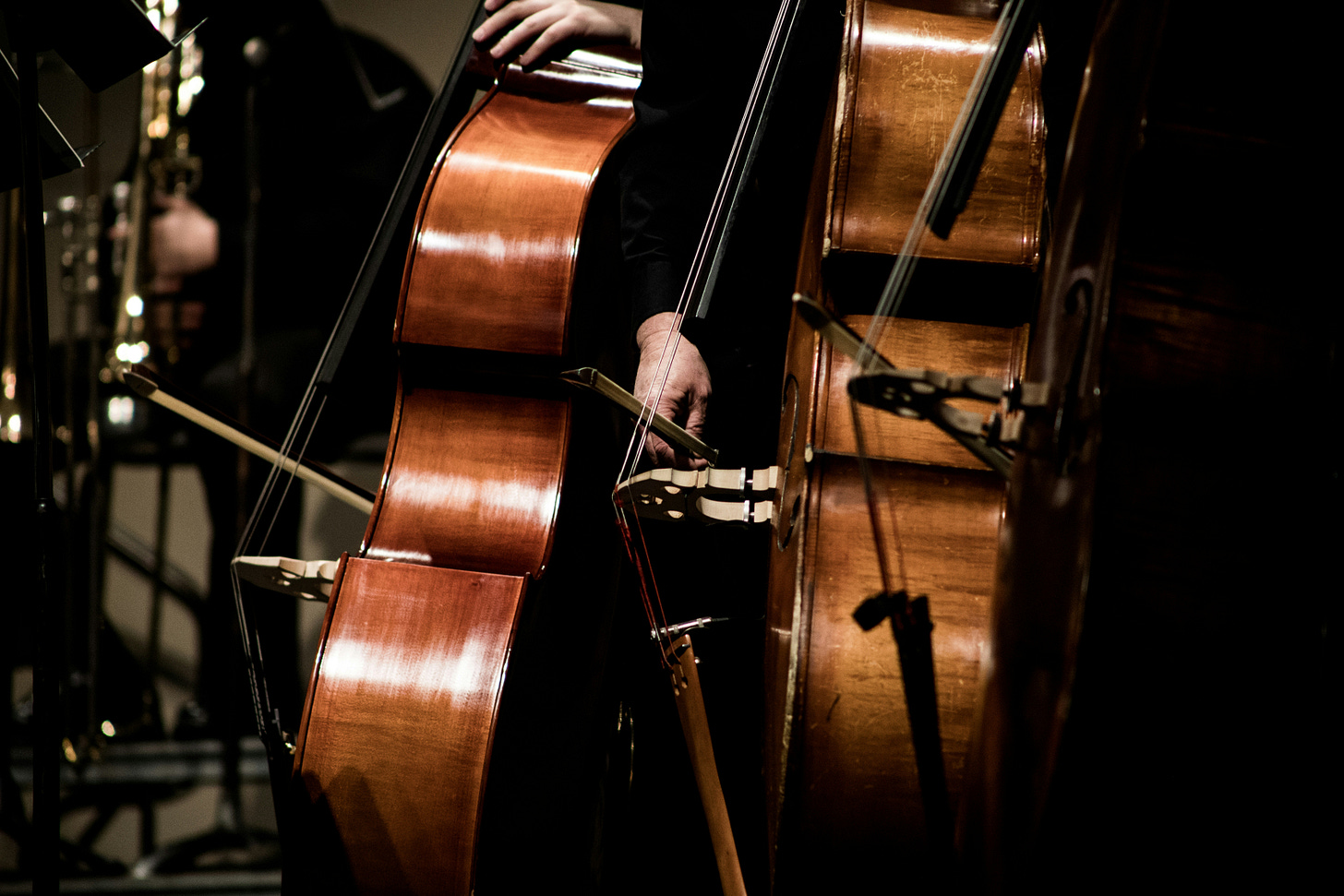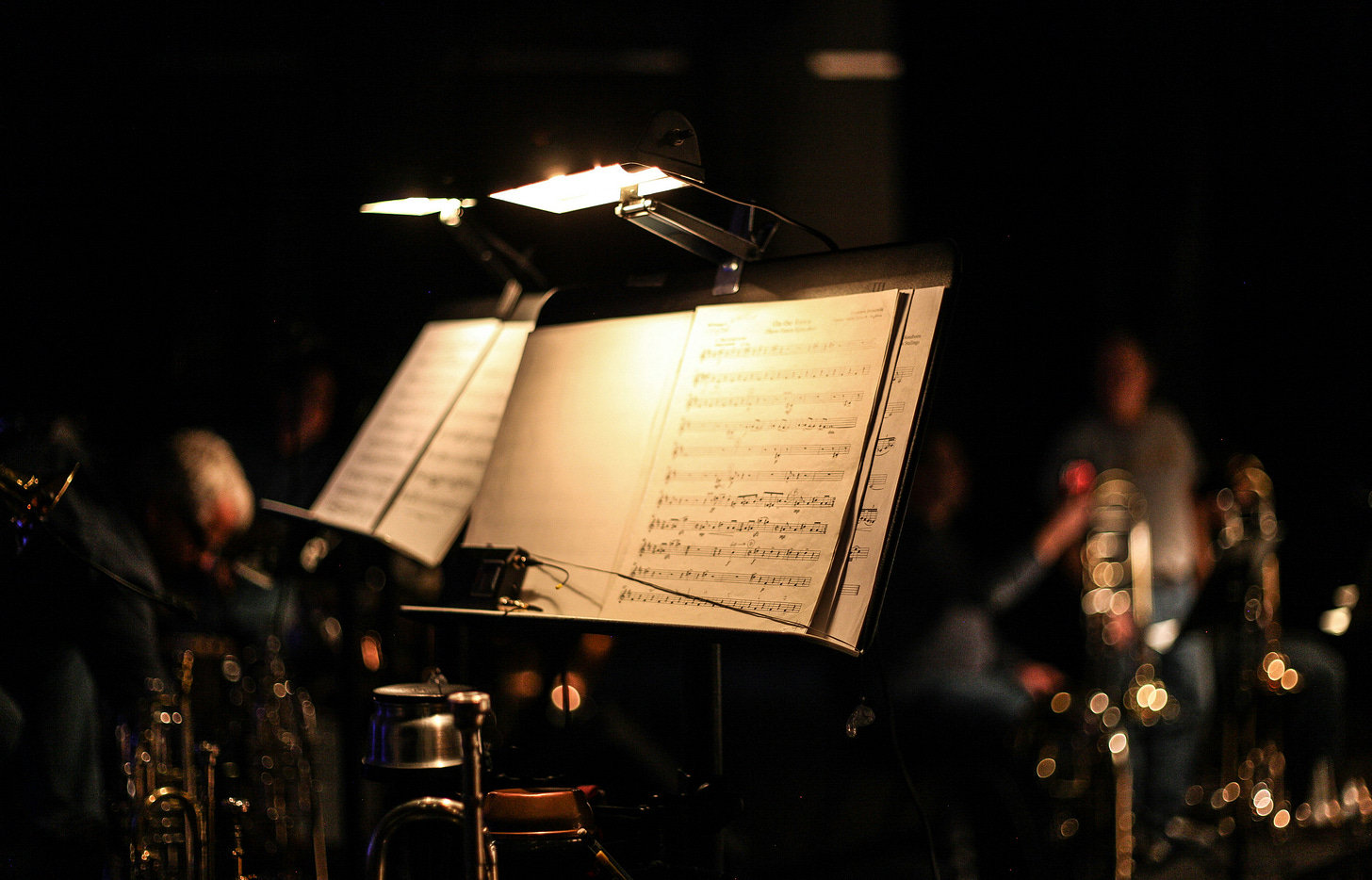5. The Problem With Excellence: When artistic standards are used to silence social responsibility
In chasing excellence, did we forget to ask who excellence was for?
The Shield of Excellence
"We must maintain our artistic excellence."
It's a familiar refrain when orchestras face questions about their purpose or impact. Who could argue against excellence? Who would advocate for mediocrity?
The very term carries an air of unassailable virtue, positioning its champions as defenders of artistic integrity against forces that would compromise standards in pursuit of other agendas. It suggests that excellence exists in opposition to relevance or inclusion – that cultural institutions must choose between artistic quality and social responsibility.
But in my research into Australian orchestras, I discovered something troubling: excellence isn't always invoked to raise standards. Sometimes, it's deployed as a weapon to silence difficult conversations about purpose, inclusion, and institutional responsibility.
I call this the "excellence paradigm": a mindset that positions artistic achievement as the singular, overriding priority of orchestral life, often in opposition to other legitimate institutional goals. This paradigm has become one of the most significant barriers to institutional evolution within Australia's orchestras, functioning not as an aspiration for artistic achievement, but as a defensive shield deployed to deflect criticism and resist change.
The Obsession With Perfection
The pursuit of excellence runs deep in orchestral culture. The technical skill required to perform orchestral music is undeniable; these are centres of artistic achievement consisting of highly skilled musical artists whose central occupation is performing technically challenging works. As one senior administrator told me, there's "a focus, almost obsession, with excellence and artistic success" that dominates thinking within these institutions.
A musician transitioning between major orchestras put it even more starkly: "It's very much in the DNA of orchestral musicians to pine for excellence. In fact, to be simply brutal, they don't pine for excellence; they pine for perfection."
This pursuit of perfection forms what another interviewee called "a baseline in the perceptions of orchestral musicians." The uncompromising mission to be at the peak of technical ability creates a powerful organisational culture that influences every aspect of orchestral life. One musician described this as the "price of entry" – that a very high musical standard is simply "a non-negotiable attribute of orchestral musicians and orchestras as collectives."
This isn't inherently problematic. Technical mastery, interpretive depth, and ensemble precision are foundational to meaningful orchestral experiences. The rigorous practice and discipline required to achieve these standards have produced some of humanity's most transcendent artistic achievements.
The issue arises when this pursuit becomes so consuming that it crowds out other essential conversations about institutional purpose and social engagement. Another administrator described how this singular focus can blind orchestras to their broader responsibilities: "This obsessive prioritisation of excellence" obscures the orchestra's capacity to focus on other goals, including what he called the "broader social role" that modern cultural institutions are expected to play.
Excellence as Institutional Misdirection
The most revealing aspect of my research was discovering how the excellence paradigm functions as a form of institutional misdirection. Several orchestral leaders described a troubling pattern: whenever questions arise about community engagement, accessibility, or social responsibility, certain stakeholders invoke excellence to shut down the conversation.
"There's pressure within the orchestra to consider artistic priorities – of which the pursuit of excellence is one – as the overarching priority," one administrator explained. "This approach obscures all other pursuits, including those connected to cultural leadership."
This creates what several interviewees described as an "artistic versus non-artistic agenda" divide. The artistic agenda, they explained, was concerned with maintaining standards of musical performance, matters related to conductors, and repertoire selections. The non-artistic agenda, by contrast, was associated with the orchestra's "presence, influence, and contribution in a broader social sense – that is, 'more than just making music.'"
Programming managers and artistic directors, according to my interviews, often positioned any deviation from core classical repertoire as a threat to collective excellence and musical standards. Popular music collaborations, contemporary works, and community-focused programming were "tolerated, but not embraced." There was a pervasive sense that these activities could "compromise and weaken the excellence paradigm."
The result? As one leader observed, "efforts were expended by these stakeholders to limit non-core orchestral programming wherever possible" – even when such programming served legitimate audience development or community engagement goals. When orchestras undertook collaboration projects with popular music artists to develop new audiences, the excellence paradigm was instrumentalised to hinder these cultural leadership objectives.
This pattern reveals how the excellence discourse can be amplified to affect attitudes and approaches throughout the organisation, creating what researchers call "cultural inertia" – a resistance to change that preserves established practices but limits institutional adaptation.
The Elite, Not Elitist Problem
Some orchestral leaders recognise the contradiction this creates. One artistic director told me his organisation strived to be "elite, not elitist" – maintaining the highest artistic standards while acknowledging that the pursuit of excellence can create barriers for new audiences.
The challenge is real and well-documented. Threshold anxiety – the physical or psychological barrier that prevents uninitiated audiences from engaging with cultural events – is widely recognised as a deterrent to new orchestral audiences. This leader identified "elitism and its connection to the excellence paradigm as a significant factor contributing to threshold anxiety in the cultural context."
When excellence becomes synonymous with exclusivity, it can actively work against the orchestra's long-term sustainability. Yet when leaders try to address this through more accessible programming or community initiatives, they often face internal resistance framed in terms of artistic standards.
It's a perfect institutional catch-22: orchestras need new audiences to survive and funding bodies increasingly expect demonstrations of public value and community engagement. But their internal culture of excellence can resist the very activities that might achieve these goals. As one leader reflected, there was "a growing community-wide dislike of the term 'excellence'" because it could be "weaponised against high-profile arts organisations."
This leader believed that arts organisations were "recognising that the tide is turning on community sentiment and, in a way, the more excellent you are, the more easy it is to tear you down." The very pursuit that was supposed to secure orchestras' cultural authority was beginning to undermine their social legitimacy.
The Primacy of the Artist
At the heart of these tensions lies what one administrator called "the primacy of the artist" – a cultural assumption that musicians' needs and expectations take precedence over all other organisational concerns. This creates an ingrained bias toward artist-centered thinking that can resist external pressures for institutional change.
"If I was a musician, and it's all about the art form, I might have a view that the government should just give us more money," this leader reflected. "If I'd had that [artform-centric] view and I was leading this organisation, saying, 'I don't know why people aren't coming, this artform is so important, the government should give us more money,' then that would be my organisational mantra."
This mindset reflects deeper questions about institutional purpose and stakeholder priorities. In my research, I found clear evidence of internal stakeholder tensions between those focused on artistic output and those concerned with broader organisational activities, including education and community outreach. These tensions directly affected how different stakeholders understood the orchestra's role as a cultural leader.
The challenge is structural as well as cultural. Australia's orchestral musicians work within an enterprise system that provides tenure and job security, but also creates what some leaders described as restrictive working conditions. Several administrators expressed frustration with negotiating through player committees to undertake community or education work, seeing this as "infeasible and misaligned with the needs and expectations of the contemporary orchestra."
One musician-leader offered a more nuanced perspective, acknowledging both sides of this tension. She recognised that "having been in a big, industrialised orchestra, it is important to have boundaries" while also noting that "everybody who's not in a major symphony orchestra... would say that they've had times where they have been exploited too much."
Yet she also saw opportunities for structural innovation that could better serve both artistic excellence and cultural leadership. She envisioned orchestras of the future potentially offering "halftime jobs" where musicians could "share a job with somebody that allows you to play in the orchestra but then at the same time pursue other interests outside," including working "in the Learning and Engagement or education department of the orchestra."
The Political Weaponisation of Excellence
Perhaps most troublingly, I found evidence of what I termed the "political instrumentalisation" of excellence within orchestral organisations. By "political," I mean the internal power dynamics and relational tensions that shape institutional decision-making.
Several leaders described how the excellence paradigm becomes a "source of obfuscation" – a way for certain stakeholder groups to deflect criticism and resist change by framing their resistance in terms of artistic integrity rather than institutional politics. This represents a sophisticated form of organisational resistance that's difficult to challenge because it appears to defend artistic values.
The pattern works like this: when orchestras face external pressure to demonstrate social value, engage with diverse communities, or modernise their practices, internal stakeholders can invoke excellence to position themselves as protectors of artistic purity against corrupting outside forces. This creates a false choice between maintaining standards and responding to legitimate social expectations.
One administrator believed that this represented a form of misdirection where "certain stakeholders within the orchestras can use the pursuit of excellence as a source of misdirection, particularly as an excuse to prioritise the artistic agenda." This dynamic allows resistance to change to masquerade as artistic principle, making it extremely difficult for leaders to navigate competing institutional demands.
This creates a particularly insidious form of institutional paralysis. External stakeholders – governments, communities, audiences – increasingly expect cultural organisations to demonstrate social value and contemporary relevance. But internal stakeholders can use excellence discourse to resist these expectations, creating ongoing tension between institutional survival and artistic tradition.
The Historical Construction of Excellence
The deeper issue is that excellence isn't objective. It's culturally constructed through specific historical processes, aesthetic traditions, and institutional priorities. Understanding this construction is crucial to recognising how excellence discourse functions in contemporary orchestral life.
In the orchestral world, our understanding of excellence emerged primarily through European aesthetic traditions, particularly the Germanic symphonic canon. It was shaped by the professionalisation of orchestras in 19th-century Europe and further reinforced by the technical benchmarks established by recording technology in the mid-20th century.
This historical development created competition between American and European orchestras for sonic perfection and interpretive authority, establishing new standards for technical precision and artistic achievement. These standards, while producing remarkable artistic results, also established implicit hierarchies about what music matters most, who belongs in orchestral spaces, and what audiences value.
In Australia, this took on additional significance. Our orchestras were established partly to overcome colonial cultural anxieties – to prove that a young nation on the periphery could match European standards. Excellence became not just an artistic goal but a civilisational marker, a way of asserting Australia's place in the Western cultural tradition.
This history continues to shape how excellence functions in contemporary orchestral discourse. When leaders invoke excellence, they're drawing on this complex legacy of cultural authority, institutional prestige, and national aspiration. The concept carries symbolic weight that extends far beyond musical performance, connecting to broader questions about cultural value, social hierarchy, and institutional legitimacy.
Beyond the False Choice
The tragedy of the excellence paradigm is that it rests on a fundamental misconception: that excellence and social engagement are mutually exclusive. The most innovative orchestral leaders I interviewed rejected this false dichotomy entirely.
One musician-leader, while fiercely defending the importance of excellence, argued that it shouldn't "stifle experimentation, entrepreneurialism, or seeking new ways to do things in orchestras." She believed there should be "capacity for failure" and "courage to take risks to try new concepts" because these contribute to overall growth.
She emphasised that she would "never stop striving for excellence" and would "never shy away from saying that's what I strive for." But she also advocated for "courage to reflect on experience and see what worked and what didn't," suggesting that excellence could be enhanced rather than compromised by experimentation and innovation.
Her perspective suggests a different model: excellence as a dynamic standard that evolves through engagement with new challenges, rather than a fixed benchmark that must be protected from contamination. This approach recognises that artistic quality can be enriched by broader inclusion, diverse programming, and community engagement.
Some orchestras are already demonstrating this integration. They've commissioned outstanding new works, rediscovered neglected masterpieces, and created dynamic programming that honours tradition while embracing innovation. Their experience suggests that excellence is best understood as an evolving standard that can encompass multiple traditions, perspectives, and approaches.
Toward Purpose-Driven Excellence
The most promising shift in orchestral leadership involves moving from excellence as a defensive posture to purpose as a generative framework. Instead of starting with "We must maintain our excellence" – a stance that often shuts down critical engagement – forward-thinking leaders begin with "What are we excellent for?"
This reframing transforms excellence from a shield into a tool, from a barrier to change into a pathway toward meaningful evolution. It acknowledges the central importance of artistic quality while placing it in service of broader institutional purpose.
Purpose-driven excellence doesn't compromise standards; it contextualises them. It asks not just how well an orchestra plays, but why it plays – what cultural, social, and artistic contributions it seeks to make. It recognises that technical virtuosity and interpretive depth are means to an end, not ends in themselves.
This approach enables more nuanced conversations about programming choices, audience development, community engagement, and organisational priorities. Rather than positioning these as threats to excellence, it treats them as expressions of purpose that can be pursued with the same rigor and commitment as artistic performance.
As one artistic director reflected: when orchestras shift "from defending excellence to defining purpose, everything changes." They stop seeing diversity as a trade-off against quality and start seeing it as essential to their artistic future. They stop treating community engagement as a sideline and recognise it as core to their mission.
The Way Forward
Excellence remains essential to orchestral identity and value. Technical mastery, interpretive depth, ensemble precision, and artistic cohesion will always be central to meaningful orchestral experiences. But excellence alone is an insufficient guide for navigating the complex challenges facing contemporary cultural institutions.
The problem isn't excellence itself, but how it has sometimes functioned in orchestral discourse – as a shield against criticism, a barrier to change, or a mask for underlying power dynamics. By examining these patterns, we can move toward a more reflective, inclusive, and purpose-driven understanding of excellence.
This shift isn't about lowering standards but raising them – expanding our conception of orchestral excellence to encompass not just technical virtuosity but social engagement, cultural relevance, and institutional ethics. It's about recognising that true excellence includes asking who is included, whose voices are heard, and what values are served by orchestral practice.
The orchestras that will thrive in coming decades won't be those that use excellence as a shield against change. They'll be those that pursue excellence as a pathway toward deeper engagement with the communities they serve, recognising that the highest form of excellence might not be resistance to change, but the capacity to evolve while maintaining core artistic values.
In the end, the problem isn't excellence – it's excellence without reflection, excellence without context, excellence without purpose. By moving beyond defensive excellence discourse toward a more expansive understanding of orchestral value, Australia's orchestras can honour their artistic heritage while embracing their role as dynamic cultural resources for diverse communities.
Next in The Orchestra Papers: The Federal Fantasy: Why Australia built six orchestras – and still argues over one
If you’re interested in these ideas, you might enjoy my podcast, Decoding Cultural Leadership, presented in partnership with Limelight.
Each episode features in-depth conversations with leading thinkers, policy-makers, and arts leaders exploring what cultural leadership means in the 21st century—from ethics and public value to stakeholder engagement and the role of the arts in social change.
Listen wherever you get your podcasts, or at samuelcairnduff.com/podcast





